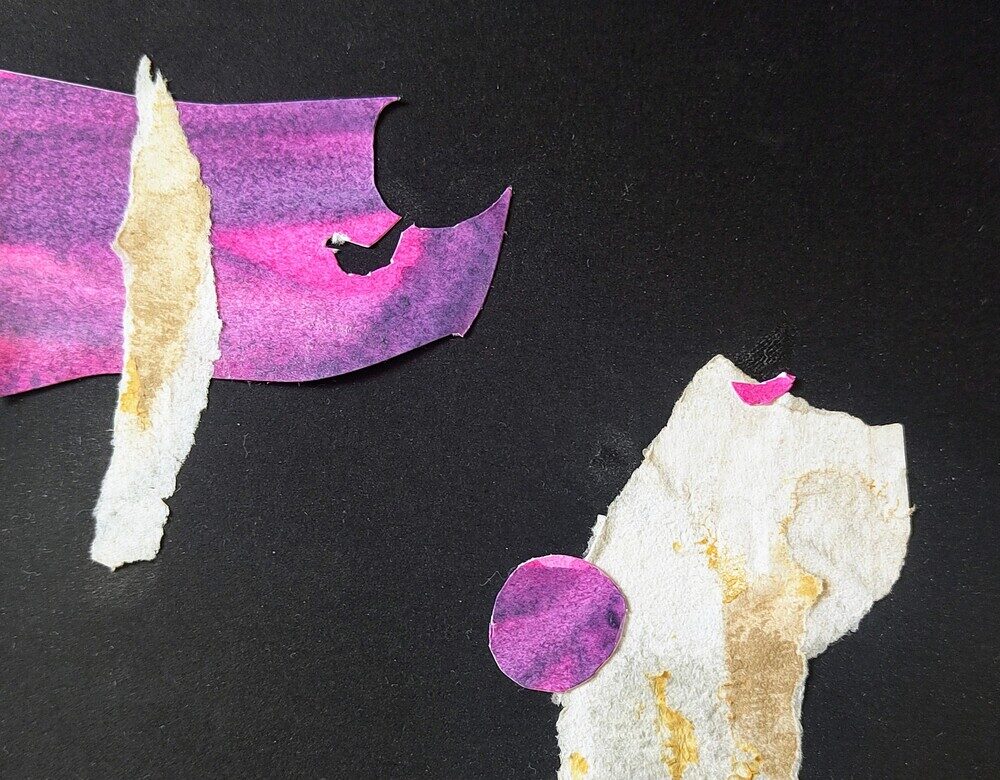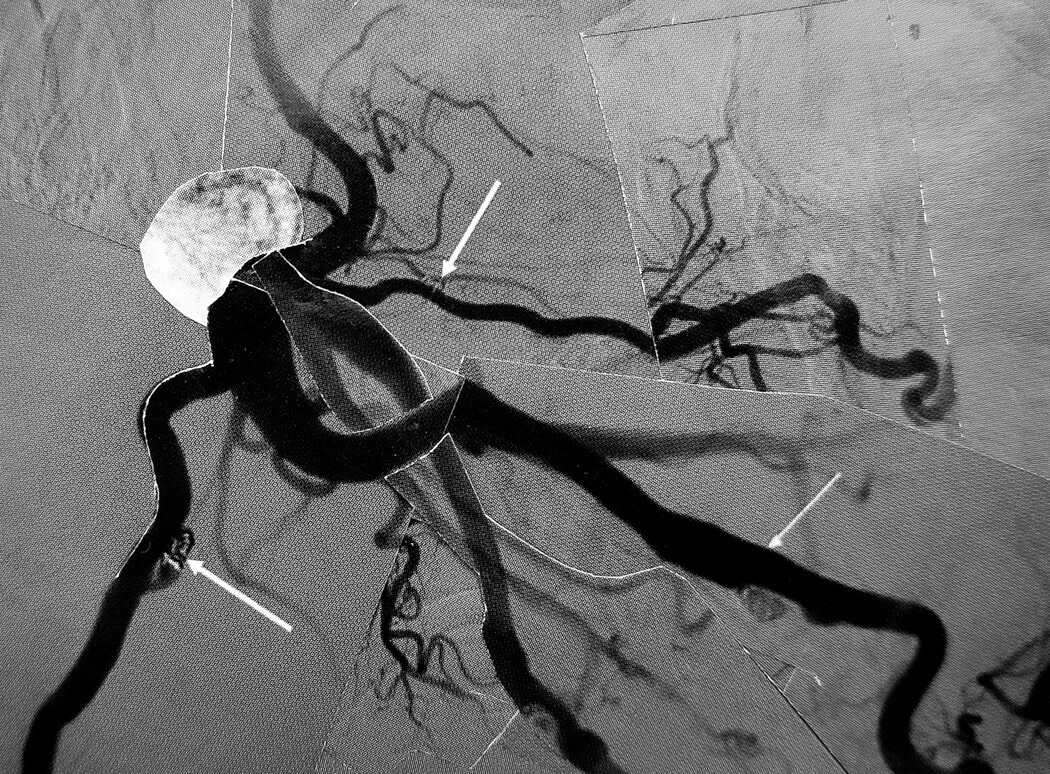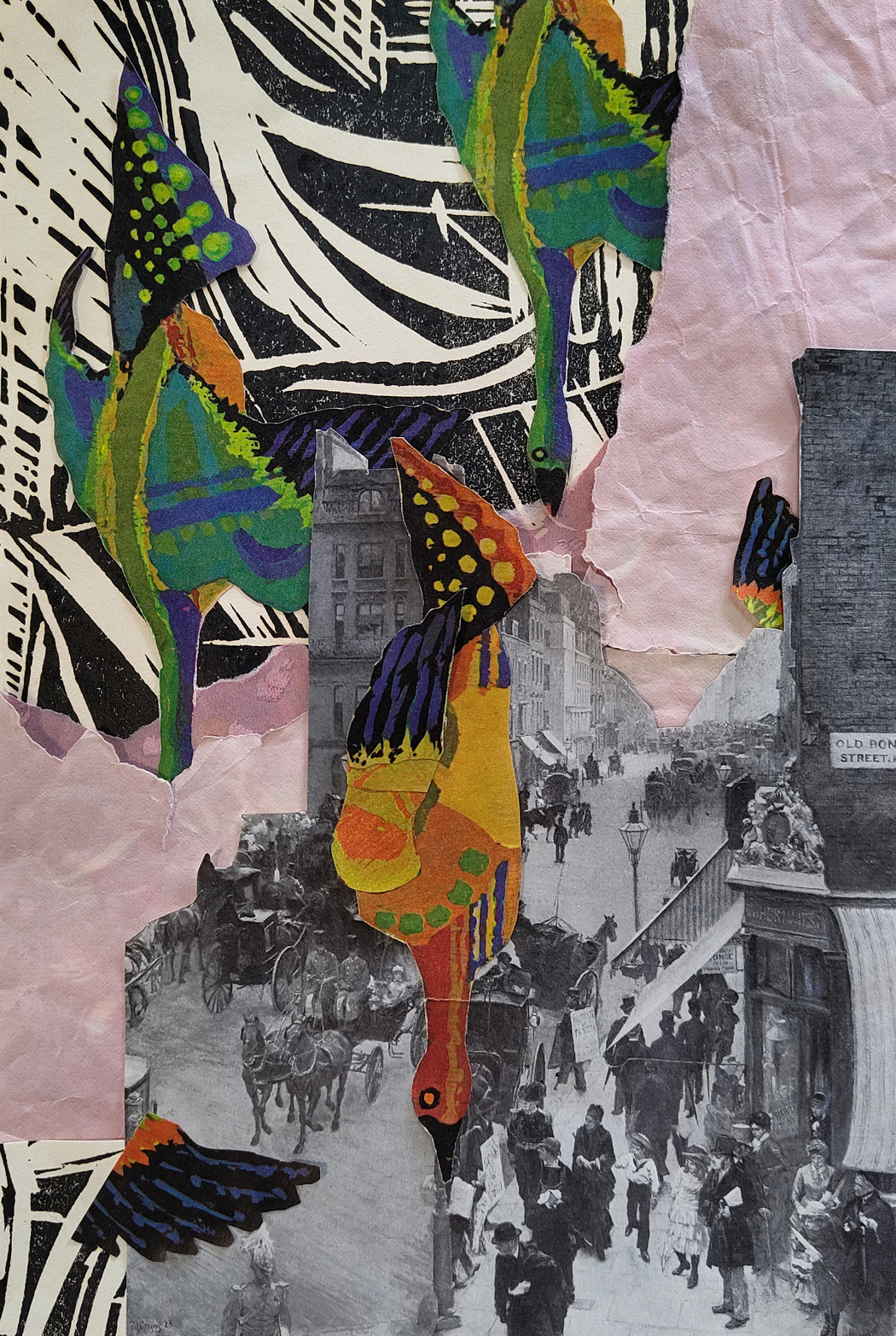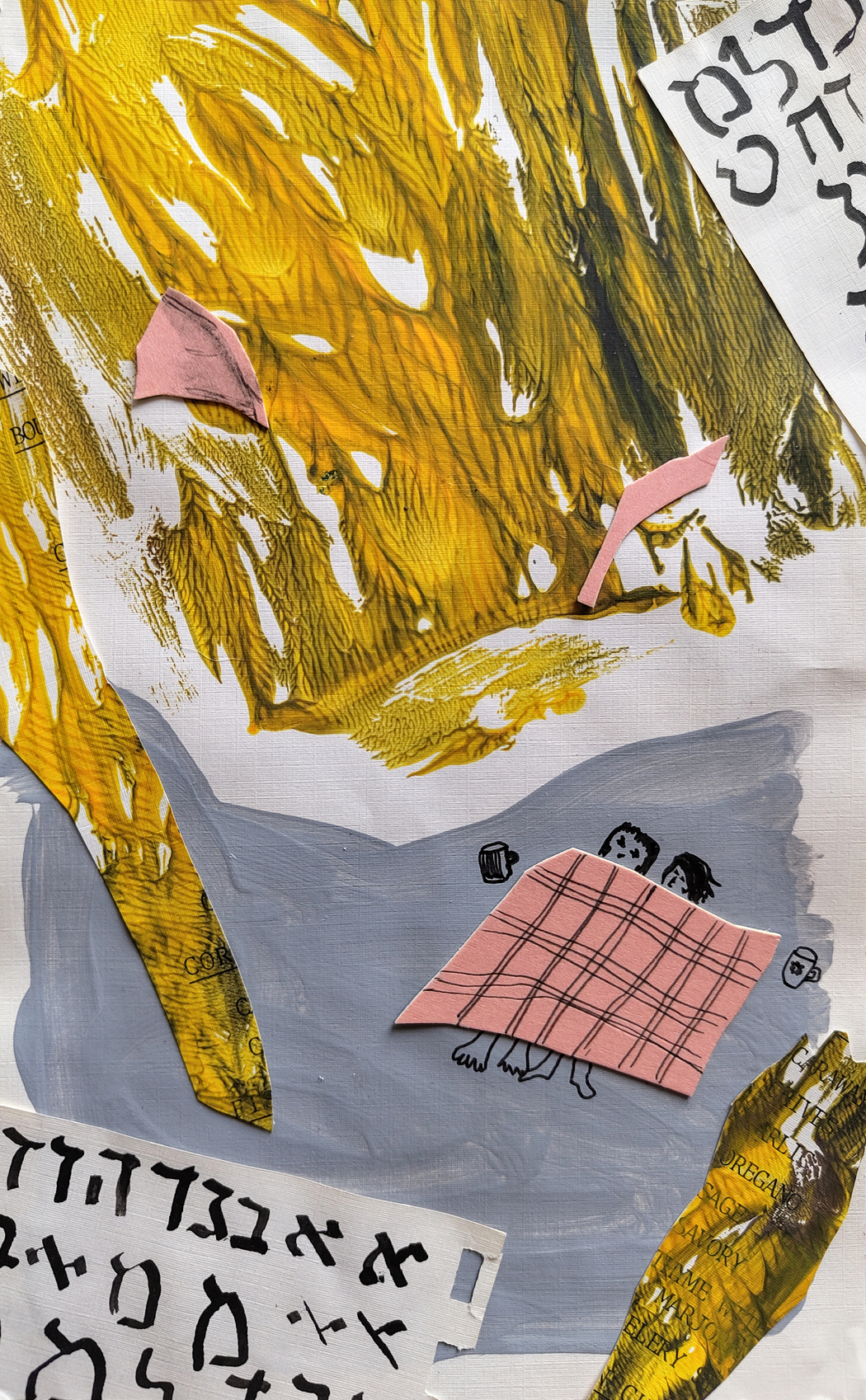Natalia Marginalia
Year of birth: 1990.
Where do you live: Be’er Sheva, Israel.
Your education: Specialist degree in Public Relations; TQUK Level 5 in Teaching English as a Foreign Language.
Describe your art in three words: Destruction, Creation, Observation.
Your discipline: Collage, assemblage, other contemporary art practices.
Instagram
 Natalia Marginalia | Freedom of Breath Struck | 2023
Natalia Marginalia | Freedom of Breath Struck | 2023
Your work often explores the tension between destruction and renewal. Can you elaborate on how these themes have evolved throughout your recent projects, particularly in relation to global and personal crises?
I started working with the theme of destruction because it became a huge and terrifying part of my physical reality – political repression, the pandemic, wars, people forced to protect themselves physically, people becoming radicalized, and, before all of that, the collapses brought on by motherhood. I’ve seen all kinds of reactions – some people become more destructive, others more creative, and some just freeze or observe. All of it seems like a way to regain a sense of control.
That got me thinking – can destruction ever be positive? Can it exist alongside creation? In my current project, I’m exploring hospitals as places where destruction – whether from illness, injury, or even treatment – is dealt with using tools that can also feel destructive. I find the line between harmful and helpful destruction to be very thin. It depends on how something is done, and whether it helps more than it hurts. I believe that the everyday struggle to find balance and stay open to uncertainty leads to better outcomes than letting our definitions of ‘good’ blind us, make us insensitive, or cause us to overreact.
You mention that your artistic process has become a “ritual-like search for new lifecycles.” Could you describe what that process looks like on a day-to-day basis?
I often pick up objects people have thrown away – metal, wood, different kinds of paper, fabric, even old canvases left near trash bins or abandoned in the desert sun. These things have already lived two lives: one as something important to someone, and one as trash. Before they can be reborn, I feel they need to be broken down again.
It reminds me of nature – nothing just disappears, it transforms and becomes part of something else. That’s what I try to do. I look for these things, take them, sometimes destroy them more, and then create something new. That’s also how I deal with the inevitable finitude of things dear to us – moments, feelings, communication, life. I look for ways they can keep living in another form.
 Natalia Marginalia | Octopus | 2022
Natalia Marginalia | Octopus | 2022
In your collage work, you incorporate both figuration and abstraction. How do you decide when to balance or blend these two elements in your compositions?
I usually start by marking some key points of meaning with figurative elements, then connect them using abstraction. After that, I add more figurative pieces – like a second focal point after the general feeling expressed by the abstraction – and they make things feel a bit surreal or magical-realistic. I can usually explain what each part refers to.
Honestly, I don’t think much about how to blend while I’m working. It’s more about feeling things with my hands, staying present with the material, and reacting in the moment. I think it also connects to my own experiences with derealization and depersonalization – it’s a blend of clarity and blur, sense and confusion, and that shows up in how I build the images.
You often use found, altered, and handmade materials in your art. How do these materials reflect the themes of care, survival, and communication that you explore in your work?
To me, survival is about adapting. The materials I use already had a purpose, but now they have to change. It’s about figuring out what we can do with what we already have, instead of always going back to some painful starting point.
Care shows up in how I work too. I gather, explore, destroy, and recreate these materials in between everything else – talking with my kid, cooking, walking the dog, doing laundry, teaching English, hiding from missile attacks, and dealing with all kinds of abruptness caused by life itself, war, my husband’s work schedule, and my limited productivity. I used to think these things were distractions from art. Now I see them as essential parts of it. They ground me. Without that connection to real life and care, my work would be either a lie or a stream of constant pain – and I don’t think that helps many people.
Art is also how I communicate. I start with something familiar to everybody – their trash – and shape it into something people recognize, like a cup, a blanket, or a piece of fencing. It’s a way of looking for shared experiences.
 Natalia Marginalia | Birds Falling on the Pavement | 2025
Natalia Marginalia | Birds Falling on the Pavement | 2025
Your project Horizon addresses the search for stability in a divided world. How do you view the role of art in creating spaces for unity amidst such divisions?
Art can help us notice what we have in common. That’s important, because when we begin from our differences and uniqueness, we tend to label each other – “wrong,” “dangerous,” “other”. And once that happens, the conversation often stops.
But if we start from what we share, it becomes easier to be curious about the differences too – to learn where they come from, rather than trying to fix or fight them.
How has your background in the humanities influenced the way you approach collage and assemblage as mediums of expression?
Studying history and culture taught me that we’re always building on what already exists. We can’t act like the past didn’t happen just because we want to. Collage and assemblage are perfect for that – they take parts of the past and combine them with new material to say something about the present. It’s the same with human experience. We carry it with us and reshape it as we go.
 Natalia Marginalia | Missile Attacks and a Warm Blanket | 2024
Natalia Marginalia | Missile Attacks and a Warm Blanket | 2024
Many of your works seem to reflect on fleeting moments. How do you translate this impermanence into something tangible through collage?
I portray the body’s reaction to a moment, and the objects around us that become witnesses and evidence of that time and place. The choice of objects or their parts reflects this fleeting nature – like I don’t consciously choose what my mind captures in the moment, and these elements may appear in my work as figurative or more symbolic forms. It’s just like when you’re falling from a bicycle or kissing, and there is a random limited set of details your brain notices in this moment – and I play with this way of perception.

Leave a Reply